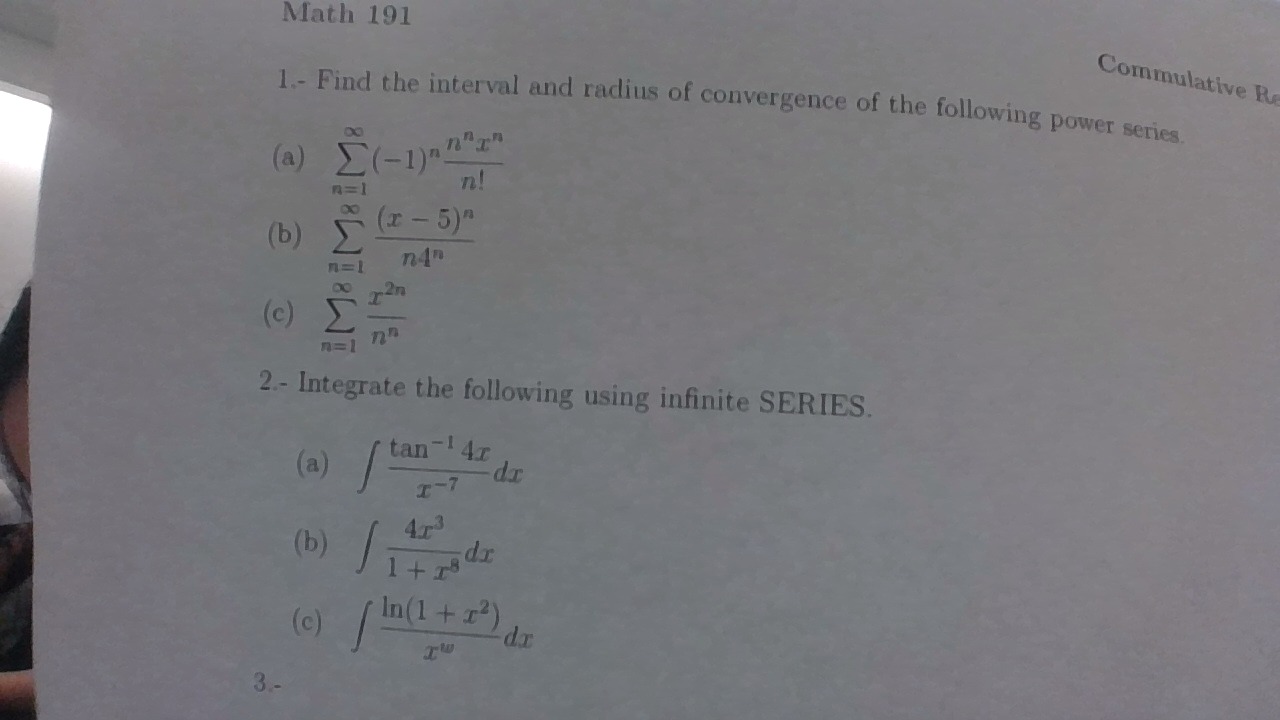use the ratio test:
[note: for the series #sum_(n=1)^ooa_n#, if #lim_(nrarroo)abs(a_(n+1)/a_n)#
-is #<1#, series converges
-is #=1#, inconclusive
-is #>1#, series diverges]
if you apply the ratio test to this: #sum_(n=1)^oo(x-5)^n/(n4^n)#, evaluating #lim_(nrarroo)abs(((x-5)^(n+1)/((n+1)(4^(n+1))))/((x-5)^(n)/((n)(4^(n))))# will show what x-values make the series converge or diverge.
simplifying the limit: #=lim_(nrarroo)abs(((x-5)/((n+1)(4)))/(1/((n)))#
#=lim_(nrarroo)abs((n(x-5))/(4n+4))#
[note: here you can divide both the numerator and denominator by #n#, because for whatever #n# value is used, the value inside the absolute value signs will stay the same (dividing by #n/n# or 1)]
#=lim_(nrarroo)abs(((n(x-5))/n)/((4n)/n+4/n))#
#=abs((x-5)/(4+0))#
#=abs((x-5)/4)#
back to the ratio test, the series can only converge if #abs((x-5)/4)<1# or #abs((x-5)/4)=1#
Case 1: #abs(x-5)<4#
#-4<x-5<4#
#1<x<9# (the solution interval must include these values)
Case 2: #abs((x-5)/4)=1#
#x-5=-4, x-5=4#
#x=1,9#
if #x=1#, series becomes: #sum_(n=1)^oo(1-5)^n/(n4^n)#
#=sum_(n=1)^oo(-4)^n/(n4^n)#
#=sum_(n=1)^oo(-1)^n/(n)#
this is the alternating harmonic series, which converges by the alternating series test
if #x=9#, series becomes: #sum_(n=1)^oo(9-5)^n/(n4^n)#
#=sum_(n=1)^oo(4)^n/(n4^n)#
#=sum_(n=1)^oo1/n#
this is the harmonic series, which diverges. here is a proof
so include #x=1# in the interval, too: #1<=x<9#
radius of convergence is half the difference between the upper and lower values for the interval #=(9-1)/2=4#
and here is a video with a similar problem


